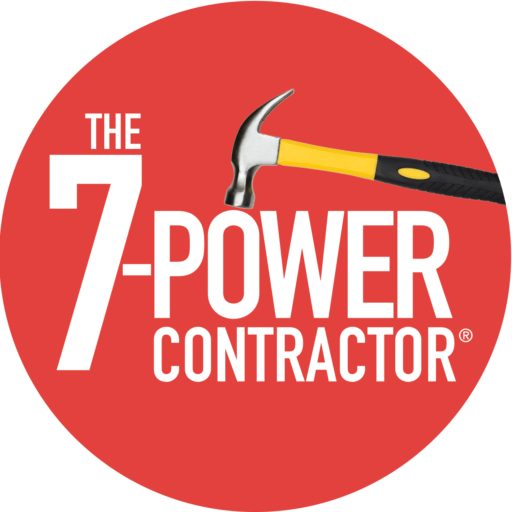Let’s say I gave you $100,000 to grow your business. You go to dinner to celebrate your great windfall and then the next morning you’re at your desk, admiring the check (yes, it’s not coming by wire transfer or PayPal®). Here’s my question: Would you know what to do with it, first, second, and third for the greatest impact? $100,000 sounds like a lot of money especially if you’re the typical contracting company which is at $2 million a year or less, and sometimes way less. But it’s also an amount that can disappear remarkably quickly unless you have a plan and use the money to execute that plan.
The other thing I know is that some problems aren’t really money problems. I’ve had some clients who when I began working with them were already deep in debt because they needed money and they resorted to maxing out their credit cards and extending their suppliers offer to finance equipment and materials. The problem is they would only have fallen deeper down the hole if they had gotten a hundred thousand dollars.
Why?
They were lacking Planning Power, which means a plan on which projects to work on. It should be the right project, at the right time, in the right way. They didn’t have systems like Operating Power (today it’s my Signature Operating Manuals System program) so they threw people at the problem hoping they’d magically make everything work right.
I totally understand this. After all, I had done the same thing at my family owned plumbing, heating, cooling, and electrical business. Hey, we were lucky. We had some money so I used it. The problem is I used it all wrong. I threw money at problems hoping to make them go away and not only did it not work, sometimes it actually made things worse. An example of this is… all the years we ran without operating manuals. It led staff to ask the same questions over and over again. We had no Org Chart so no one knew who was handling what so either multiple people did the same thing or no one did it. Both were bad.
I had no structured pay for how the Techs could make more money, so Techs would end up at my door at 5 p.m. asking for a raise knowing they would typically get it because we had so much work we needed them to stay.
Think about how easy it is to load up your credit card. It feels like “free money” until the statement shows up at the end of the month and you have to pay the bill. Do you even remember what you bought? In general, unless you have a plan for using money, it’s easy to fritter it away with zero impact on growth. That’s spending money. A better idea is to formulate a plan for investing that money in a way that will generate a return on that investment. Simply spending money with no plan behind it makes no such promise.
The plan I’m referring to is based on a written goal for your business — usually a revenue goal—that is broken down into a series of subgoals that will get you where you want to go. It’s got clear objective benchmarks, like how many trucks do you need to get to that goal? How much money does each truck need to generate? (Hint: at least $250,000.) Should you acquire some of your competitors? If yes, and I hope you said yes…which ones? And finally, when will all of this be done?
Why is this important? Let’s say you’re in New York and want to drive to LA. Unless you’ve done the trip 1,000 times, can you get there without a map or GPS? Maybe. You could decide to just drive west but chances are it’ll take forever and by the time you get to your destination the opportunity you were after will probably have expired.
Your goal is the destination (LA) and the plan lays out the milestones you need to hit to ensure you will get from NY to LA as quickly and efficiently as possible. Milestones require that there be KPIs (known performance indicators) or what some call metrics. And the key is the right KPIs for the only staff that are you money makers and that’s the people who turn the wrenches or screwdrivers. The rewards go to the Service Techs, the System Advisors and Installers. Then, the Service Managers, Install Managers as well as your top managers win by having their KPIs that move the needle the way you want.What’s common to the clients I worked with who were in debt when I showed up? Their staffing ratio of outside staff to inside staff was way out of whack. This meant there were too few outside staff to the amount of inside people. With the systems and Staffing Power we changed this for the better…way better. And the good news was money flowed in vs flowed out.
A budget allows you to see what the inflows vs. outflows there are and make the course correction in real time. This is your Financial GPS. Goal setting and benchmarks in writing (and known to those who have to know it) would ensure that $100,000 works as hard as possible to solve your biggest problem or challenge and create opportunities to grow and be profitable.
Even if you don’t have an extra $100,000 to invest right now, I suggest you take some time to find out what those projects are. Because whether it’s $100,000 or $1,000,000, I guarantee it will go fast with no impact if you don’t know exactly where to aim it.
